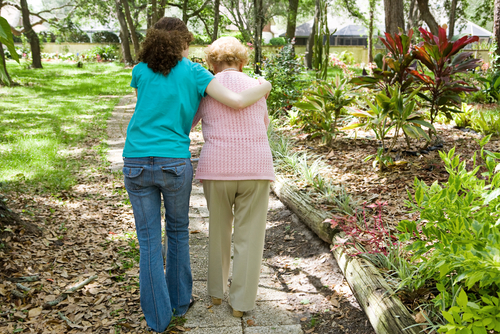
Recent NICE guidance suggested that 30% of people over 65 and 50% of people over older than 80 fall at least once a year and there is evidence that in people with learning disabilities there is some increased risk and this impacts on people of younger age.
Finlayson, in a prospective cohort study suggested that the risk of falling in people with learning disabilities may be three times higher than in the general population.
The risk factors associated with falls are diverse for people with learning disabilities, although a recent U.S. study looked at the prevalence of falls amongst a cohort of adults with learning disabilities using baseline data from the Longitudinal Health and Intellectual Disability Study, looking for specific risk factors, which they found to be
- being female,
- having arthritis,
- having a seizure disorder,
- taking more than 4 medications,
- using walking aids,
- having difficulty lifting/carrying greater than 10 lb.
The authors of the current study set up a falls service within an NHS community learning disabilities team, led by physiotherapy and then set out to evaluate the impact of that service on all the people with learning disabilities referred to the service in an 18 month period. An earlier population based study carried out by the team found that 40% of adults with learning disabilities had had at least one fall in a 12-month period.
Method
The falls pathway service involved assessment and multidisciplinary intervention through a structured pathway, and included an individually tailored 12-week home-based exercise programme which was designed around individual needs. Exercises were carried out daily for the 12-week period in addition to one aerobic activity 2–3 times a week.
The physiotherapist made a home visit around every 4 weeks and where required, physiotherapy support workers made additional visits.
The team also developed a series of accessible information leaflets which included information on getting up from the floor following a fall, mobility etc. and these were offered to participants.
The service was offered to all clients with learning disabilities who were referred over the 18-month period. They decided to look at four outcome areas –
- Changes in scores on the Tinetti balance and gait instrument (an assessment tool that provides a score relating to the risk of falls) This was measured before and after the intervention.
- Number of falls as recorded by the carer of the client at home, 4-6 weeks before and 4-6 weeks after the intervention.
- Clinical judgement of client benefit from the physiotherapist, after the intervention
- Judgement of impact from clients’ carers (family or support worker)
During the evaluation period, fifty clients with learning disabilities reported to have had one or more falls were referred.
There were some immediate responses as a result of the referral – over half were referred to other health professionals and some were supplied with mobility equipment.
The tailored exercise programme was found to be suitable for 30 (70%) and 27 (54%) completed it.
Findings

25 of 27 people had reduced numbers of falls after the exercise programme
Of the 27 clients who completed exercise programme
- 25 (93%) demonstrated significant improvement post-intervention, in terms of a reduction in number of falls and an increase in Tinetti score
- 70% of clinicians and 60% 25 carers (all support workers) agreed with the same outcome as their client’s Tinetti score
The pathway approach enabled a range of appropriate professional cross-referrals to be made and closer joint working with occupational therapy and vision services
Conclusion and Comment
Falls are a significant issue for people with learning disabilities and we also know that a lack of exercise for this population impacts on weight management and confidence.
The tailored home based exercise programme led to improvements in balance and gait and a consequent reduction in the number of falls recorded for a significant proportion of the clients referred to the service.
The authors suggest that if a falls prevention service is led by physiotherapists, the adults with learning disabilities are more likely to be prescribed exercise. They point to a comparison with Smulders et al, where the service was not physiotherapy led and where only 23% were prescribed exercise.
Of course, this is an evaluation of a service by clinicians who were involved in setting up and running the service. One of the outcome measures was clinician judgement on benefit, so there are clearly opportunities for bias in the results, but this is balanced by the use of an objective measure (Tinetti scores) and carer judgement. However, the intervention in this kind of study is not tested against any other intervention, or indeed a waiting list control.
The sample size, although involving all clients referred to the service over the study period, is still small and the follow up (4-6 weeks post intervention) is very short. The authors point out that “client benefit outcomes in terms of improvement in balance and gait and/or reduction in falls are demonstrated but not rigorously evidenced. “
Link
Crockett, J., Finlayson, J., Skelton, D. A. and Miller, G. (2014), Promoting Exercise as Part of a Physiotherapy-Led Falls Pathway Service for Adults with Intellectual Disabilities: A Service Evaluation. Journal of Applied Research in Intellectual Disabilities [abstract]
References
Finlayson, J., Morrison, J., Jackson, A., Mantry, D. and Cooper, S.-A. (2010), Injuries, falls and accidents among adults with intellectual disabilities. Prospective cohort study. Journal of Intellectual Disability Research, 54: 966–980 [abstract]
Smulders, E., Enkelaar, L., Weerdesteyn, V., Geurts, A. C. H. and van Schrojenstein Lantman-de Valk, H. (2013), Falls in older persons with intellectual disabilities: fall rate, circumstances and consequences. Journal of Intellectual Disability Research, 57: 1173–1182. [abstract]
Falls: assessment and prevention of falls in older people, NICE guidelines [CG161] Published date: June 2013

RT @LearningDisElf: Physiotherapy led falls pathway service for adults with learning disabilities showed reduced falls in evaluation http:/…
Physiotherapy led falls pathway service for adults with learning disabilities showed reduced… http://t.co/wyyxbX7aDE
Sheila Harrold liked this on Facebook.
Ian Penfold liked this on Facebook.
Jonathan Beebee liked this on Facebook.
Rachel Newman liked this on Facebook.